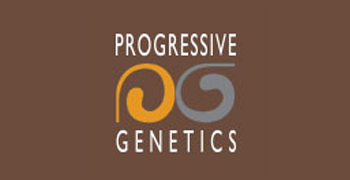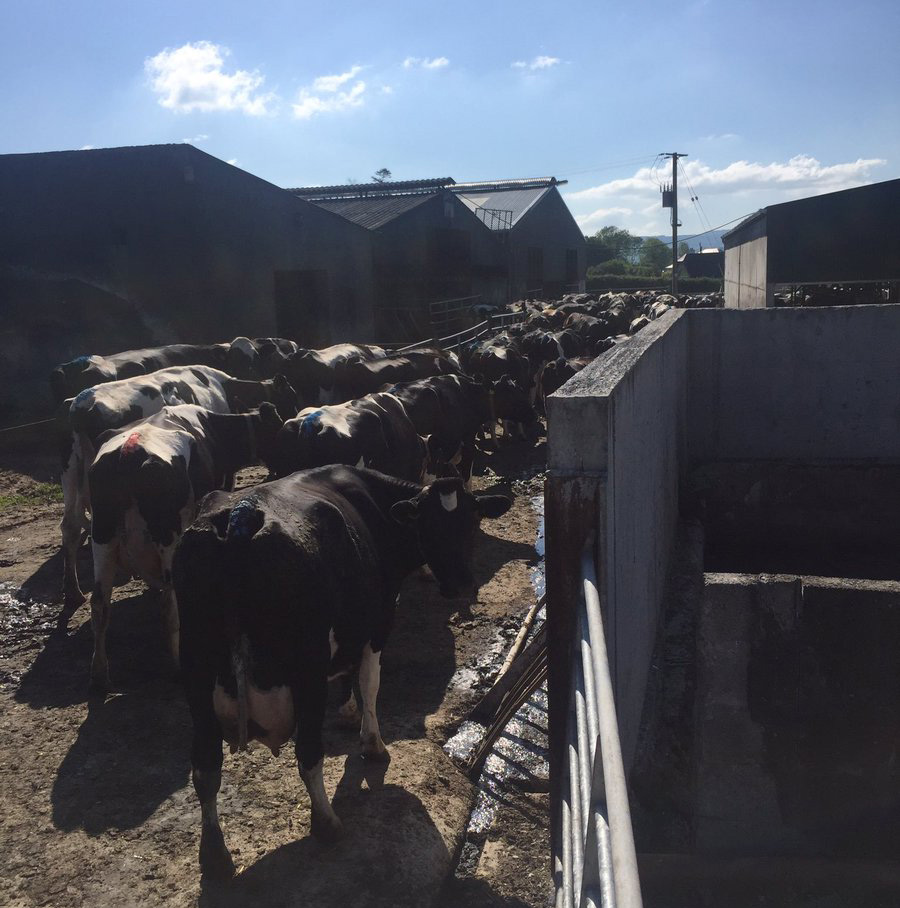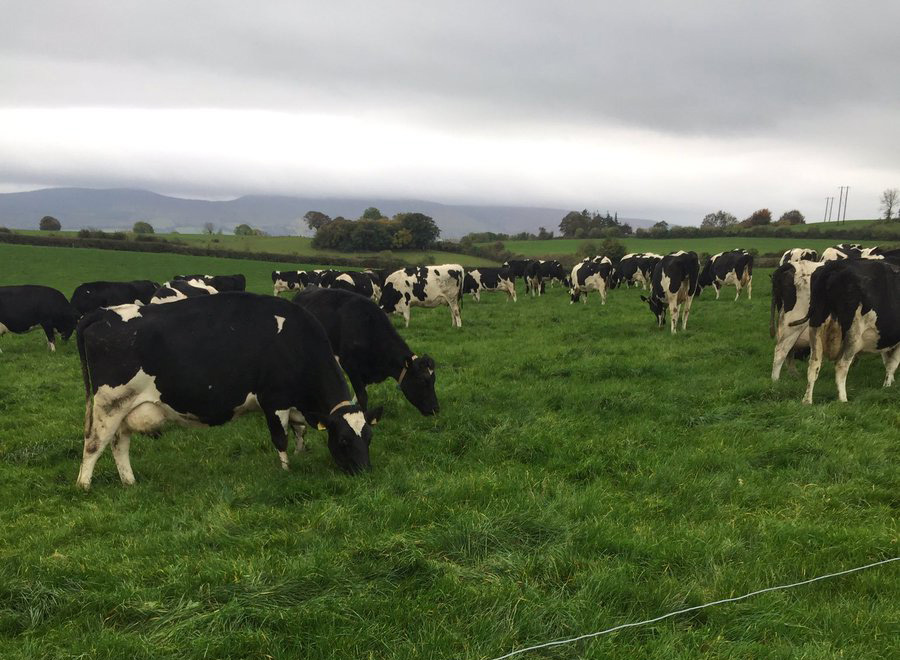South of Nenagh, just over 100m above sea level, Jerry Moloney is now milking nearly 100 cows. This is up from 54 in 2010, when Jerry returned home after 10 years with Procter & Gamble.
Jerry explained: “I walked into the nuts and bolts of a very good farm.”
However, there were some areas that warranted improvement. The herd had “good fertility, but milk was poor”.
Jerry always had a good interest in cows and had been holding the reins with regards to breeding from 2007 or so. He used sires like Lord Lily, Mascot and Fatal. These worked well on the British Friesian base cow.
The ideal cow and production
When Jerry took over in 2010, he really was at a crossroads.
I didn’t want big, tall, fine cows that would have to be pumped with meal and that would be soft. EBI (Economic Breeding Index) was becoming vogue at that stage and I just put all my eggs in the EBI basket. Over the last couple of years, it’s really paying off.
When setting out, the desired cow was: a good cow that would last in a spring-based system; calve to grass; and produce 6,000L. Over time, the production target gradually increased.
Last year, the cows produced 7,400L. That level of production was achieved with a herd consisting of 30% heifers.
Over a 294-day lactation, the cows produced 583kg of solids from a concentrate input of 1.6t/cow. That’s 210kg more than Arrabawn’s average supplier and ranks the herd in the top 1% of Arrabawn suppliers for kilograms of milk solids. The herd’s 371-day calving interval is also impressive and is 17 days better than the co-op average.
For Jerry, the main driver for milk solids is the six-week calving rate. In 2017, 86% of the herd calved in just under six weeks.
Ideally I’d like to get that to 90%. That is the single biggest thing that can drive my output here.
This year, all cows will calve in 12 weeks. Detailed notes are kept for all cows; especially those with issues at calving. The vet usually comes out during the second week of April. During this visit, all problem cows are scanned and handled.
The ultimate cow
The new target for Jerry’s “ultimate” cow is an animal capable of producing 8,000L and 650kg of milk solids from a concentrate input of 1.5t. Excellent fertility is also required.
When questioned on the level of meal feeding, his response is unwavering.
I have no problem feeding meal once cows stay fertile and operating within the system.
This spring, 106 will calve down with an EBI of €128. Of these, 98 will be retained and the surplus will be sold.
Jerry explained: “I want a cow calving in February or March. I don’t feed any maize, beet or any of that and I don’t have a feeder wagon.
“All my cows get is silage, meal in the parlour and the best grass that I can give them all year. I don’t want that system changing in the future. The cow I am breeding fits right into that system. I milk from early February right up to Christmas.”
Breeding
Dan Duignan, Progressive Genetics AI technician, serves the cows and heifers (which are synchronised) for Jerry. The breeding season begins on the May bank holiday weekend. Last year, all the heifers were served in 12 days.
“Some lads may say I should calve the heifers earlier, but I am here on my own.”
The Tipperary-based farmer finds having the cows in the parlour with the heifers makes those first few milkings more straightforward.
Up until last year, all cows got high-EBI genomic Holstein Friesian AI for the first five weeks. But, after going through last year’s milk recording figures, Jerry has gotten very selective.
Basically any cow that has a protein over 3.7% will be getting Holstein Friesian, as will heifers. Everything else will get inseminated to a polled Hereford or something like that.
This is because Jerry is essentially at his maximum stock numbers currently and 20-25 heifers are available to come in, which is more than what is needed.
Empty rates in 2016 were 4%. There was a jump in 2017 to 9.5%, but Jerry stressed that he has a short enough breeding season; breeding of cows finishes on July 12 and heifers on June 18.
He is also looking forward to the herd maturing and only bringing in 10-12 heifers per year.
Sire selection
Sire selection is pretty straightforward. Jerry explained: “I am using all genomic sires. I don’t use any daughter-proven sires.
Some lads say they have very mixed views on genomics. I have nothing but good things to say about genomics. I have a batch of LWR heifers calving this year and they are as good as any stock I have ever bred.
“My production, solids, milk, and fertility from genomic sires is showing on paper and in the tank. It is something I have huge faith in. All heifers are genomically tested.
“I am at the stage where I am 100% confident in it now. I jumped straight in; I used all genomic bulls and I don’t particularly pick the highest EBI bull. What I am concentrating on this year is my milk production sub-index.
“This year, I want a milk production sub-index of over €100 and +30kg of milk solids. I will put less emphasis on fertility (€90+), as I feel I can afford to.
I don’t see any reason to go back to daughter-proven bulls. The whole genomic thing has revolutionised breeding. I have stuck with EBI and genomics. If you look at my co-op reports, I’m improving every year.
Jerry is also finding the gestation of new bulls so much shorter.
“I have heifers calving 10-12 days early. My start date this year was February 6 and I nearly had 20% calved by then.”
There are cows and heifers in the herd by: RUU; DEU; NHS; SOK; IRP; LLK; DSU; HMY; LHZ; PSZ; XRB; ABO; JFK; HZB; FAD; PBM; ZTG; LWR; YAB; FR2236; and FR2239. There are calves on the ground by: FR2239; FR2298; FR4020; FR4018; HZB; and LWR.
Grassland management
Jerry’s dry and free-draining farm has been reseeded in the last five years. Jerry has invested heavily in nitrogen (N), phosphorous (P), potassium (K) and lime in recent years. The latest soil sample results show that all the grazing block is now at index 3 and 4 for P and K.
Fragmentation is an issue. The milking platform is 30ha and there are five separate out blocks within two miles; but they’re too far to walk cows.
“We’ll be stocked at 3.5 cows per hectare this year (milking platform). We’ll settle at 3.5 cows per hectare. We could go to four cows per hectare on a good year, but that’s a very fine line.”
Cows have been on-off grazing since February 4 this year. The farm is usually closed up around November 10 at a closing cover of 700-750kg/ha (dry matter) – allowing an opening farm cover of 1,000kg/ha in early February.
The farm is walked regularly, but Jerry does admit that he doesn’t measure grass enough.
“I want to graze covers of 1,500kg/ha. I am out there and if I see anything after mid-April through to June over 1,500kg/ha, I just take it out straight away. I don’t hang around and by doing that you have top-quality silage.
I do try and chase really good, top-quality silage with a dry matter digestibility of 75-80%. And, I try to keep a bank of it in the yard.
At the time of reseeding, Jerry doesn’t opt to include clover.
“I didn’t like the way it was taking over, as some paddocks were bare in February and March until it got going.
“Last year, I actually stitched some clover back into some paddocks (after seeing how the cows had reacted to swards with more clover). As a result of this, the cows performed really well on these swards, with a noticeable increase in milk solids.”
Going forward, Jerry will stitch in 2kg of clover to all paddocks over the next few years.
The 13th milk cheque
Due to the fragmented nature of the farm, a number of beef-sired calves are kept to provide a “nice income stream”. These animals are sold as stores at 12-18 months.
“It is like a 13th milk cheque to be honest. You’re not going to get rich out of them, but it is an alternative income.”
When it comes to calves, all calves are grown very well. Four years ago, Jerry moved to Shine milk powder and he stresses that he will never go back, as it’s a massive labour saver. On average, Jerry feeds each calf 47kg of milk replacer – nearly two bags per calf.
Milk recording
Jerry milk records four times a year, but he’s not yet ready to use selective dry cow therapy (SDCT). Although his somatic cell count (SCC) has been under 100,000 cells/ml for the last couple of years, milk recording results are monitored and Cephaguard short-withdrawal dry cow tubes are used.
In the early years, there were a number of old cows and SCC was a serious issue. However, Jerry is very much aware that SDCT is something that he’s going to do.
“It’s something I am going to have to do and something we’re all going to have to do, but not yet. Dealing with a high SCC has just stuck in my head. I have the problem nailed down now.”
The team
Outside of the busy spring period, Jerry is usually in the yard for 6:00am and out of the yard by 6:00pm. Married to Fiona, they have one daughter Aoife (six).
“I am heading for 40 now as well. I just think there is more to life than work. I don’t want to end up married to the farm.”
A chuckling Jerry described Fiona and Aoife as “fair weather farmers”. “They feed calves when it’s not raining,” he laughed.
There is a wide team on-farm. Even though the focus is essentially on being a one-man operation, there is a herdsman in for the busy time. Two men also provide relief when needed. Jerry has a very good symbiotic relationship with a neighbour and a contractor does all the slurry and fertiliser work in the spring.
The Tipperary-based farmer also enjoys being part of the Ford Discussion Group with Padraig Costigan, which has been going for a couple of years now.
Michael and Marion, Jerry’s parents, were a “huge help” when he started. He added: “I owe them an awful lot. I inherited a top-notch farm with a top-notch herd of cows that just needed a bit of fine tuning.
“They have always been very supportive of me, ever before I took over the farm and even after. They’ve never held me back and always encouraged me.
“If I had an idea, they’d encourage me to chase it. I had lots of bumps along the way and they didn’t come down on me like a tonne of bricks.
“They’d encourage me to try again and that was their attitude. I do owe them a lot to be honest. I’m very appreciative and thankful,” Jerry concluded.
More information
For more information on the services provided by Progressive Genetics, visit the company’s website. Click here for more information






